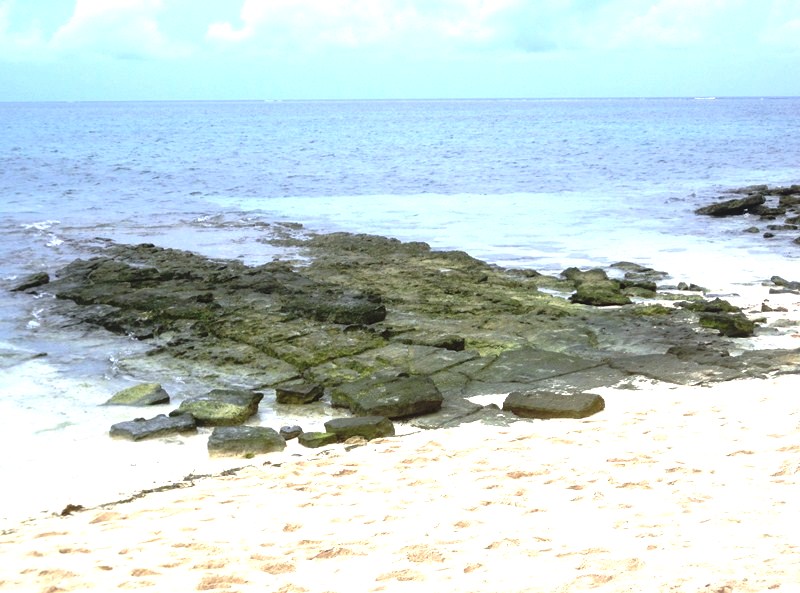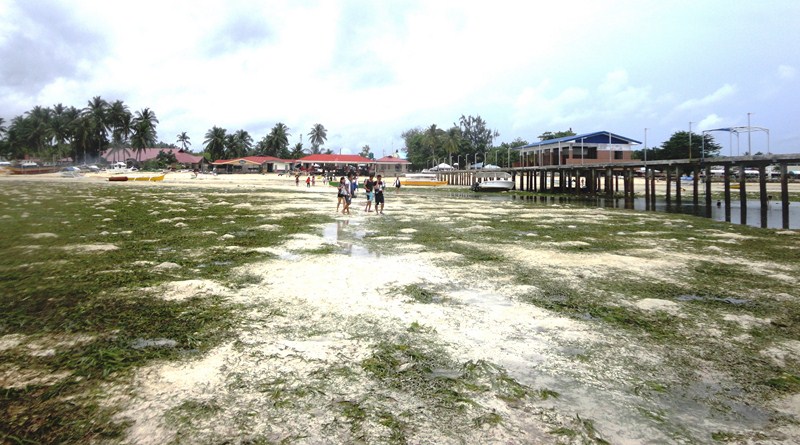Part of Bacau Bay Resort-sponsored Island Hopping Tour
After breakfast at Bacau Bay Resort’s Amihan Restaurant, we proceeded to the resort’s private port where our motorized outrigger boat for our island hopping tour awaited us. We were scheduled to visit three islands (Waling-Waling Island, Banana Island and Malcapuya Island) as well as Kayangan Lake. Getting to Waling-Waling Island (also called Bulog Uno), the first island in our tour, entailed a long 1.5-hour trip.
Check out “Malcapuya Island“
Even though the sun was at its peak during our boat trip, the seas were very rough and those seated at front were drenched by the huge waves. Some of the ladies even became seasick.
Check out “Resort Review: Bacau Bay Resort Coron“
Nearing the end of our trip, a couple of very small, rocky islands (Bulog Uno and Dos) soon came into view. Our boat soon made landfall at Waling-Waling Island (Bulog Uno) and, upon alighting, some of us made our way up a path up a small hill.
The island has a number of open-air cabanas (said to have been used by celebrities), clean bathrooms, an island bar as well as a big house at the top of the hill where one can stay overnight.
A separate path led us to a cool and windy viewpoint where we had a gorgeous view of both sides of the island, the powdery white sand beach below, the two-toned clear and azure waters, the surrounding islands and the neighboring, uber-hyped and expensive Two Seasons Resort on Bulog Dos which is connected to Waling-Waling by a very nice and long sandbar (currently submerged during our visit as it was high tide).
Overall, this lovely, private island, perfect for honeymooners, is clean, with beautiful scenery. Bring comfortable water shoes or slippers as the long uphill walk up the path to small hill in the middle of the island is lined with small coral stones.
The sand in the beach is very fine and good for swimming, taking pictures or just lazing under the sun. There are some nice fish shoals around and the beach goes slowly down into the water. The water here is warm and the current is calm.

L-R: the author, Mr, Feliciano Rodriguez III, Ms. Sara Grace Fojas, Ms. Leica Dacuycuy and Ms. Via Marie Claire Baroma
While the corals here were not the best in Coron, it was still good enough. About 15-20 feet from the beach is some excellent snorkeling with starfish, angel fish, barracudas, snapper, blue tang, triggerfish, trunkfish, Moorish idols and parrotfish. We were lucky to have been able to stop here as construction of another resort on the island was slated to start.
Waling-Waling Island: Coron, Palawan. Admission: PhP150 per adult. Children are free of charge.
Bacau Bay Resort Coron: Governor’s Drive, Sitio Jolo, Poblacion 5, Coron 5316, Palawan. Mobile numbers: (0995) 760-3444 and (0995) 760-3445. E-mail: info@bacaubaycoron.com. Website: www.bacaubayresortcoron.com.
Manila Sales & Marketing Office: Anya Hospitality Corporation, 5/F Pilgrim Building, 111 Aguirre St., Legazpi Village, Makati City 1229, Metro Manila. Tel: +63-553 8888 loc. 34-36. Fax: +632 874-0426. E-mail: reservations@bacaubaycoron.com. Website:www.anyahospitalitycorp.com.





































































































































